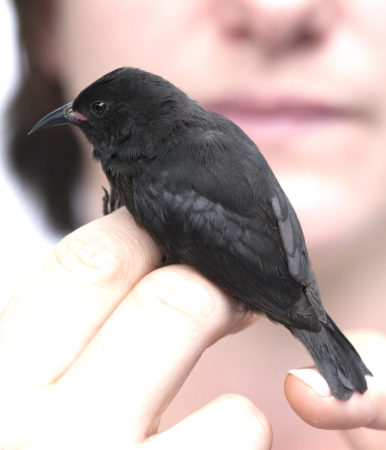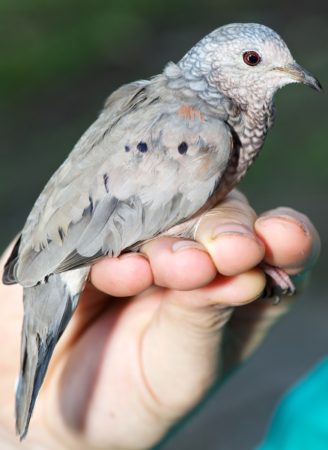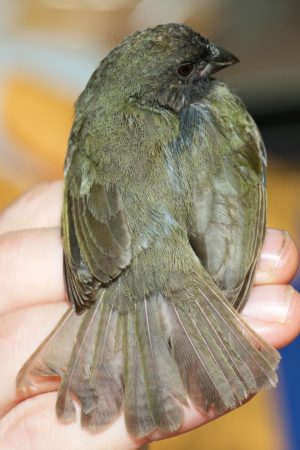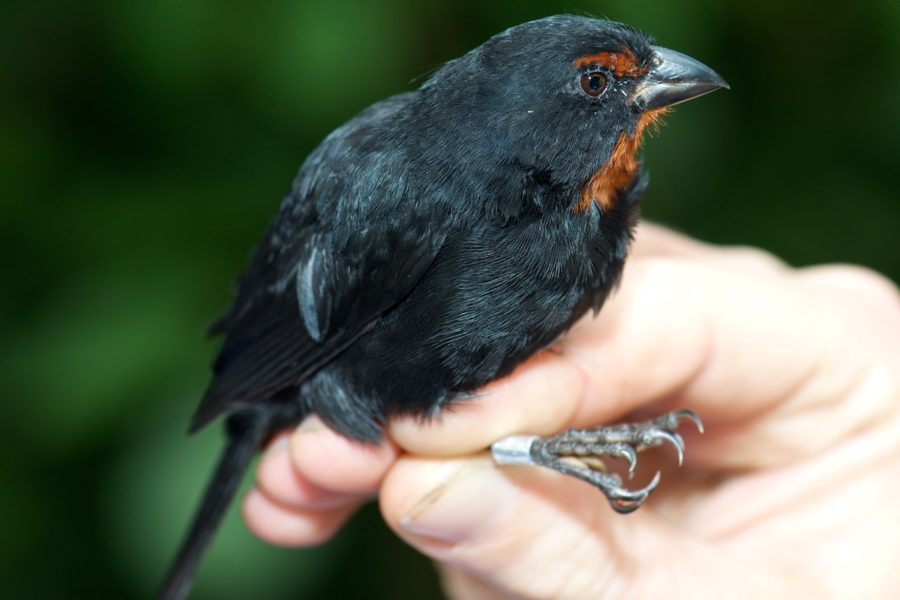
Did you know that the same species of Caribbean birds can be a bit different on each island? Find out more from Nicky Koper, who visited Grenada with her team, to compare the Grenadian birds with those across the Caribbean.
Every island in the Caribbean has its own feel, vibe, and ultimately, its own ecosystems. It is not surprising, then, that the Caribbean’s bird communities have adapted a little differently to every island they are found on. This makes each island population genetically and ecologically distinct. Our team from the University of Manitoba and Oak Hammock Marsh Interpretive Centre (in Manitoba, Canada) wanted to learn more about why this happens.
Recently, the team published two papers highlighting how and why birds on different Caribbean islands are distinct from one another. We paid special attention to land birds of Grenada, because to the best of our knowledge, the unique forms and structures of land birds here have only been studied in depth for one species before (Bananaquits, by Dr. Joseph Wunderle). While we collected lots of primary data from Grenada in our field trips there, these papers represent one of those special projects that really came about through collaborations with and contributions from many scientists, who generously contributed their data from other islands (and Venezuela) to enable this research (see our thank-you*, below!).

Although we caught 19 species in Grenada in mist-nets from 2015 to 2017, we focused our analyses on just 4 of these, for which we had lots of data (> 400 individuals per species) from Grenada and other islands: Bananaquit, Black-faced Grassquit, Lesser Antillean Bullfinch, and Common Ground Dove.
Personally, I found our results extremely interesting, as we found many differences between the populations on Grenada compared with other islands, as published in our recent Journal of Caribbean Ornithology paper. In fact, every one of the 4 species we studied on Grenada differed in at least one way from every other population we studied. In a few cases, the Grenada populations were exceptional; for example, Lesser Antillean Bullfinches were smaller on Grenada than anywhere else, while Common Ground Doves had longer tarsi (lower leg bones) than any other population.

We also really wanted to find out what might have contributed to the unique adaptations of these species across the Caribbean. In our paper in the journal Ornithology, we show that islands with lower avian diversity have populations with characteristics suggesting evidence of “ecological release” – on islands with fewer species, there is less competition among species, which allows for that population to use a wider variety of habitats or niches. This, in turn, tends to result in morphological characteristics that help birds to successfully use a wider variety of resources.
While ecological release seems to be the most important single driver affecting evolution of physical traits in the species we studied, it’s definitely not the only one. Grassquits had longer wings and ground doves had longer tarsi on islands with mongoose, which might mean that these species have begun to adapt to the recent increase in predation risk from that animal. The stronger they can fly or lever off of the ground, the better they can escape mongoose. Morphology of several species also varied with climatic differences among islands.
We think the key take-home messages from this research are that Grenada’s bird populations – and indeed, the populations on all the Caribbean islands – are ecologically unique. Our conservation and management of these islands shouldn’t focus just on species that are endemic; we also need to recognize that each island population contributes to the diversity of its species, so we really need to conserve the species on every island on which they occur.

*We sincerely thank these researchers for generously sharing their morphological data with us: Floyd Hayes, Miguel Lentino, Chris Rimmer, Kent MacFarlane, John D. Lloyd, Stewart White, Bob Wilkerson, and The Institute for Bird Populations. Many thanks to George Wallace for directing us to a publicly accessible database compiled from years of research. Many thanks to our volunteer banders and assistants, including Chelsea Enslow, Christoph Ng, Laura Burns, Ezra Campbell, Nicholas Bergen, Marie-Ève Cyr, Hannah Carey, and Alice Davey.
Dr. Nicola Koper is a Professor in the Natural Resources Institute of the University of Manitoba. She studies avian conservation biology in Canada and the Neotropics. Currently, she is focusing on effects of anthropogenic noise, oil and gas activity, and agroecology of birds.

One comment
Comments are closed.